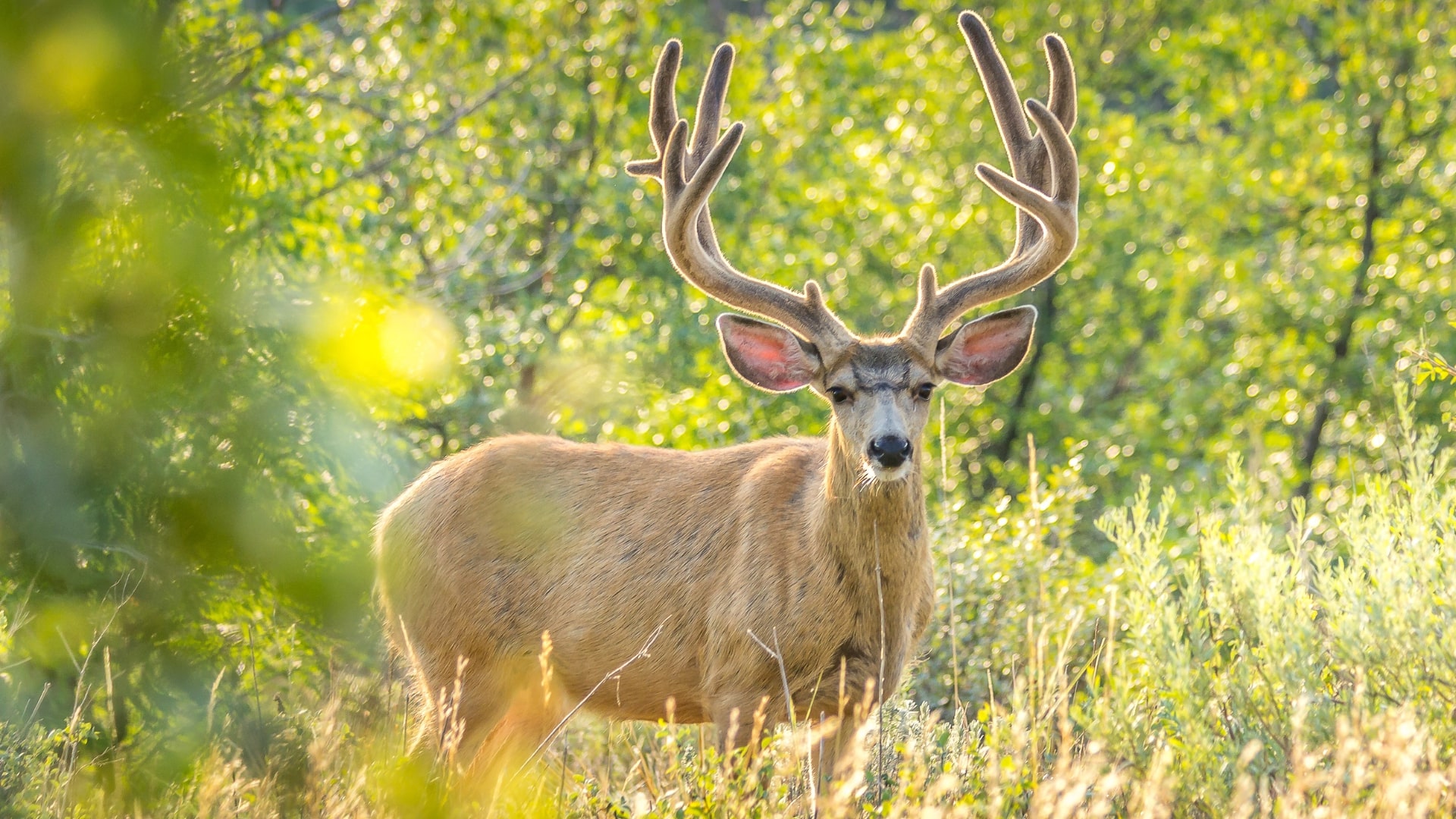Physical characteristics
The Mule Deer (Odocoileus hemionus) is a large deer species that gets its name from its mule-like ears. The bucks (males) have antlers that fork into two branches, with each branch also having a series of points. These antlers can grow up to 4 feet wide and 4 feet tall. The does (females) are smaller in size and do not have antlers. Mule Deer are generally gray-brown in color, with a white rump patch and a black-tipped tail.
Behavior
Mule Deer are primarily active during dawn and dusk, with a tendency to bed down during the hottest parts of the day. They are typically solitary or found in small groups of up to four individuals, except during the breeding season when they form larger groups. Mule Deer are strong swimmers and jumpers, and are known to be able to leap over fences up to 8 feet tall. They also have a good sense of smell and hearing, which makes them difficult to approach undetected.
Habitat
Mule Deer can be found throughout western North America, from the western states of the United States to central Mexico. They prefer habitats that have a mix of forested areas and open meadows, and are often found in mountainous regions. During the winter months, they migrate to lower elevations in search of food and to avoid deep snow.
Diet
Mule Deer are herbivores, primarily feeding on shrubs, grasses, and forbs. During the summer months, they may feed on flowers and new growth, while during the winter months, they may feed on conifers and bark.
Breeding
Mule Deer breed during the fall, with the mating season starting in late October and extending into December. During this time, the bucks compete with each other for access to females, and engage in displays such as antler rattling and parallel walks. After mating, the does will carry their young for about 200 days before giving birth in the spring.
Ecological role
Mule Deer play an important ecological role as herbivores in their ecosystems. They help to control the growth of plant populations and provide a food source for predators such as mountain lions, wolves, and coyotes. In addition, Mule Deer are important to many Native American cultures and have cultural significance.
Mule Deer Hunting
Mule deer are a popular game animal among hunters, with a hunting season that typically runs from August to December, depending on the state and region. Mule deer hunting is a popular sport and a way of life for many people in the western United States and Canada. There are several methods used for hunting mule deer, including spot-and-stalk, still hunting, and stand hunting.
Spot-and-stalk hunting involves glassing a large area, such as a hillside or valley, looking for mule deer. Once a deer is spotted, the hunter will try to get as close as possible before taking a shot. Still hunting is a method where the hunter slowly and quietly walks through the woods, looking for deer. This method can be effective in areas with dense cover, but it requires a great deal of patience and skill. Stand hunting involves waiting for the deer to come to the hunter, usually from a tree stand or ground blind.
Hunting mule deer requires skill and knowledge of the animal’s habits and behavior. It is important to have a good understanding of the terrain and the deer’s movements in the area. Hunters must also be familiar with the regulations for the specific hunting season and location.
Mule deer are known for their keen sense of smell, so hunters need to take care to minimize their scent. They should also wear clothing that is quiet and blends in with the surroundings. The use of camouflage clothing can be effective in certain environments, but it is not always necessary.
It is important for hunters to practice ethical and responsible hunting practices to ensure the continued health and sustainability of mule deer populations. This includes following hunting regulations, respecting private property rights, and using non-lead ammunition to reduce the risk of lead poisoning in wildlife.
Tracks & Signs
Mule deer tracks are typically heart-shaped with two pointed toes, slightly curved inward. Their tracks typically measure around 2 to 3 inches (5-8 cm) long. Dew claws are evident in soft soil, snow, and when running.
Mule deer scat, or feces, is a common sign of their presence. It is usually pellet-like, similar to that of other deer species. Fresh scat may have a moist appearance, while older scat becomes drier and more crumbly.
Conservation
Mule Deer populations have declined in recent years due to habitat loss, disease, and predation. Conservation efforts are focused on preserving and restoring their habitat, as well as monitoring populations and enforcing hunting regulations to ensure sustainable harvests. In addition, many organizations work to educate the public about the importance of Mule Deer and their role in ecosystems.
Did You Know?
Mule deer are named for their large ears, which resemble those of a mule.
These distinctively long ears help enhance their hearing, allowing them to detect potential threats or predators from a distance.
They possess a unique adaptation called “stotting” or “pronking.”
This behavior involves leaping with all four feet simultaneously, often accompanied by a stiff-legged posture and an arched back. Stotting is believed to serve as a signal to predators, indicating that the deer is healthy, fit, and difficult to catch.
Mule deer are incredible migratory animals.
Some populations undertake long-distance migrations, traveling hundreds of miles between their summer and winter ranges in search of suitable food and shelter. These migrations showcase their endurance and adaptability to changing environmental conditions.
Image sources: National Park Service, NatureTracking





